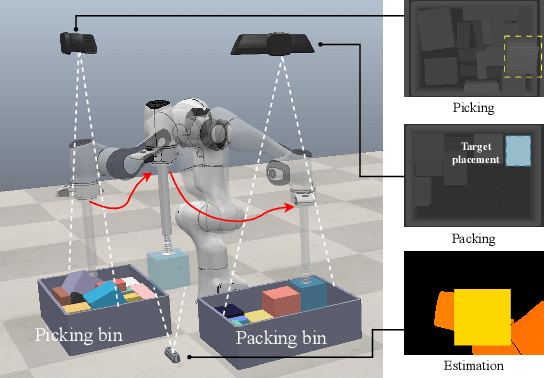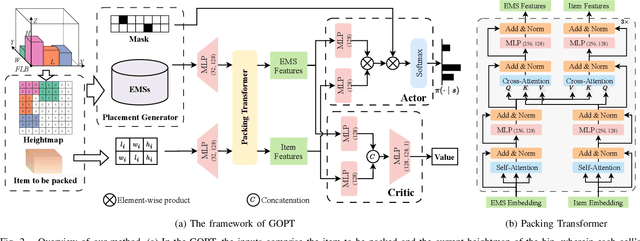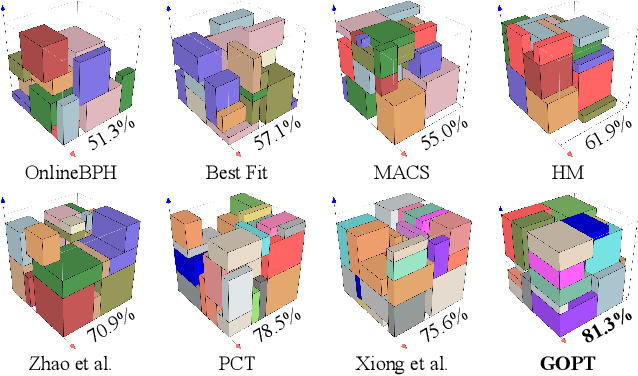Kai Ding
ProtoBERT-LoRA: Parameter-Efficient Prototypical Finetuning for Immunotherapy Study Identification
Mar 26, 2025Abstract:Identifying immune checkpoint inhibitor (ICI) studies in genomic repositories like Gene Expression Omnibus (GEO) is vital for cancer research yet remains challenging due to semantic ambiguity, extreme class imbalance, and limited labeled data in low-resource settings. We present ProtoBERT-LoRA, a hybrid framework that combines PubMedBERT with prototypical networks and Low-Rank Adaptation (LoRA) for efficient fine-tuning. The model enforces class-separable embeddings via episodic prototype training while preserving biomedical domain knowledge. Our dataset was divided as: Training (20 positive, 20 negative), Prototype Set (10 positive, 10 negative), Validation (20 positive, 200 negative), and Test (71 positive, 765 negative). Evaluated on test dataset, ProtoBERT-LoRA achieved F1-score of 0.624 (precision: 0.481, recall: 0.887), outperforming the rule-based system, machine learning baselines and finetuned PubMedBERT. Application to 44,287 unlabeled studies reduced manual review efforts by 82%. Ablation studies confirmed that combining prototypes with LoRA improved performance by 29% over stand-alone LoRA.
A Language Vision Model Approach for Automated Tumor Contouring in Radiation Oncology
Mar 19, 2025Abstract:Background: Lung cancer ranks as the leading cause of cancer-related mortality worldwide. The complexity of tumor delineation, crucial for radiation therapy, requires expertise often unavailable in resource-limited settings. Artificial Intelligence(AI), particularly with advancements in deep learning (DL) and natural language processing (NLP), offers potential solutions yet is challenged by high false positive rates. Purpose: The Oncology Contouring Copilot (OCC) system is developed to leverage oncologist expertise for precise tumor contouring using textual descriptions, aiming to increase the efficiency of oncological workflows by combining the strengths of AI with human oversight. Methods: Our OCC system initially identifies nodule candidates from CT scans. Employing Language Vision Models (LVMs) like GPT-4V, OCC then effectively reduces false positives with clinical descriptive texts, merging textual and visual data to automate tumor delineation, designed to elevate the quality of oncology care by incorporating knowledge from experienced domain experts. Results: Deployments of the OCC system resulted in a significant reduction in the false discovery rate by 35.0%, a 72.4% decrease in false positives per scan, and an F1-score of 0.652 across our dataset for unbiased evaluation. Conclusions: OCC represents a significant advance in oncology care, particularly through the use of the latest LVMs to improve contouring results by (1) streamlining oncology treatment workflows by optimizing tumor delineation, reducing manual processes; (2) offering a scalable and intuitive framework to reduce false positives in radiotherapy planning using LVMs; (3) introducing novel medical language vision prompt techniques to minimize LVMs hallucinations with ablation study, and (4) conducting a comparative analysis of LVMs, highlighting their potential in addressing medical language vision challenges.
Beyond Token Compression: A Training-Free Reduction Framework for Efficient Visual Processing in MLLMs
Jan 31, 2025



Abstract:Multimodal Large Language Models (MLLMs) are typically based on decoder-only or cross-attention architectures. While decoder-only MLLMs outperform their cross-attention counterparts, they require significantly higher computational resources due to extensive self-attention and FFN operations on visual tokens. This raises the question: can we eliminate these expensive operations while maintaining the performance? To this end, we present a novel analysis framework to investigate the necessity of these costly operations in decoder-only MLLMs. Our framework introduces two key innovations: (1) Hollow Attention, which limits visual token interactions to local attention while maintaining visual-text associations, and (2) Probe-Activated Dynamic FFN, which selectively activates FFN parameters for visual tokens. Both methods do not require fine-tuning, which significantly enhances analysis efficiency. To assess the impact of applying these reductions across different proportions of layers, we developed a greedy search method that significantly narrows the search space. Experiments on state-of-the-art MLLMs reveal that applying our reductions to approximately half of the layers not only maintains but sometimes improves model performance, indicating significant computational redundancy in current architectures. Additionally, our method is orthogonal to existing token compression techniques, allowing for further combination to achieve greater computational reduction. Our findings may provide valuable insights for the design of more efficient future MLLMs. Our code will be publicly available at https://github.com/L-Hugh/Beyond-Token-Compression.
ScaleMAI: Accelerating the Development of Trusted Datasets and AI Models
Jan 06, 2025



Abstract:Building trusted datasets is critical for transparent and responsible Medical AI (MAI) research, but creating even small, high-quality datasets can take years of effort from multidisciplinary teams. This process often delays AI benefits, as human-centric data creation and AI-centric model development are treated as separate, sequential steps. To overcome this, we propose ScaleMAI, an agent of AI-integrated data curation and annotation, allowing data quality and AI performance to improve in a self-reinforcing cycle and reducing development time from years to months. We adopt pancreatic tumor detection as an example. First, ScaleMAI progressively creates a dataset of 25,362 CT scans, including per-voxel annotations for benign/malignant tumors and 24 anatomical structures. Second, through progressive human-in-the-loop iterations, ScaleMAI provides Flagship AI Model that can approach the proficiency of expert annotators (30-year experience) in detecting pancreatic tumors. Flagship Model significantly outperforms models developed from smaller, fixed-quality datasets, with substantial gains in tumor detection (+14%), segmentation (+5%), and classification (72%) on three prestigious benchmarks. In summary, ScaleMAI transforms the speed, scale, and reliability of medical dataset creation, paving the way for a variety of impactful, data-driven applications.
Semantic Refocused Tuning for Open-Vocabulary Panoptic Segmentation
Sep 24, 2024



Abstract:Open-vocabulary panoptic segmentation is an emerging task aiming to accurately segment the image into semantically meaningful masks based on a set of texts. Despite existing efforts, it remains challenging to develop a high-performing method that generalizes effectively across new domains and requires minimal training resources. Our in-depth analysis of current methods reveals a crucial insight: mask classification is the main performance bottleneck for open-vocab. panoptic segmentation. Based on this, we propose Semantic Refocused Tuning (SMART), a novel framework that greatly enhances open-vocab. panoptic segmentation by improving mask classification through two key innovations. First, SMART adopts a multimodal Semantic-guided Mask Attention mechanism that injects task-awareness into the regional information extraction process. This enables the model to capture task-specific and contextually relevant information for more effective mask classification. Second, it incorporates Query Projection Tuning, which strategically fine-tunes the query projection layers within the Vision Language Model (VLM) used for mask classification. This adjustment allows the model to adapt the image focus of mask tokens to new distributions with minimal training resources, while preserving the VLM's pre-trained knowledge. Extensive ablation studies confirm the superiority of our approach. Notably, SMART sets new state-of-the-art results, demonstrating improvements of up to +1.3 PQ and +5.4 mIoU across representative benchmarks, while reducing training costs by nearly 10x compared to the previous best method. Our code and data will be released.
GOPT: Generalizable Online 3D Bin Packing via Transformer-based Deep Reinforcement Learning
Sep 09, 2024



Abstract:Robotic object packing has broad practical applications in the logistics and automation industry, often formulated by researchers as the online 3D Bin Packing Problem (3D-BPP). However, existing DRL-based methods primarily focus on enhancing performance in limited packing environments while neglecting the ability to generalize across multiple environments characterized by different bin dimensions. To this end, we propose GOPT, a generalizable online 3D Bin Packing approach via Transformer-based deep reinforcement learning (DRL). First, we design a Placement Generator module to yield finite subspaces as placement candidates and the representation of the bin. Second, we propose a Packing Transformer, which fuses the features of the items and bin, to identify the spatial correlation between the item to be packed and available sub-spaces within the bin. Coupling these two components enables GOPT's ability to perform inference on bins of varying dimensions. We conduct extensive experiments and demonstrate that GOPT not only achieves superior performance against the baselines, but also exhibits excellent generalization capabilities. Furthermore, the deployment with a robot showcases the practical applicability of our method in the real world. The source code will be publicly available at https://github.com/Xiong5Heng/GOPT.
TongGu: Mastering Classical Chinese Understanding with Knowledge-Grounded Large Language Models
Jul 04, 2024Abstract:Classical Chinese is a gateway to the rich heritage and wisdom of ancient China, yet its complexities pose formidable comprehension barriers for most modern people without specialized knowledge. While Large Language Models (LLMs) have shown remarkable capabilities in Natural Language Processing (NLP), they struggle with Classical Chinese Understanding (CCU), especially in data-demanding and knowledge-intensive tasks. In response to this dilemma, we propose \textbf{TongGu} (mean understanding ancient and modern), the first CCU-specific LLM, underpinned by three core contributions. First, we construct a two-stage instruction-tuning dataset ACCN-INS derived from rich classical Chinese corpora, aiming to unlock the full CCU potential of LLMs. Second, we propose Redundancy-Aware Tuning (RAT) to prevent catastrophic forgetting, enabling TongGu to acquire new capabilities while preserving its foundational knowledge. Third, we present a CCU Retrieval-Augmented Generation (CCU-RAG) technique to reduce hallucinations based on knowledge-grounding. Extensive experiments across 24 diverse CCU tasks validate TongGu's superior ability, underscoring the effectiveness of RAT and CCU-RAG. The model and dataset will be public available.
Scaling Laws for Fact Memorization of Large Language Models
Jun 22, 2024Abstract:Fact knowledge memorization is crucial for Large Language Models (LLM) to generate factual and reliable responses. However, the behaviors of LLM fact memorization remain under-explored. In this paper, we analyze the scaling laws for LLM's fact knowledge and LLMs' behaviors of memorizing different types of facts. We find that LLMs' fact knowledge capacity has a linear and negative exponential law relationship with model size and training epochs, respectively. Estimated by the built scaling law, memorizing the whole Wikidata's facts requires training an LLM with 1000B non-embed parameters for 100 epochs, suggesting that using LLMs to memorize all public facts is almost implausible for a general pre-training setting. Meanwhile, we find that LLMs can generalize on unseen fact knowledge and its scaling law is similar to general pre-training. Additionally, we analyze the compatibility and preference of LLMs' fact memorization. For compatibility, we find LLMs struggle with memorizing redundant facts in a unified way. Only when correlated facts have the same direction and structure, the LLM can compatibly memorize them. This shows the inefficiency of LLM memorization for redundant facts. For preference, the LLM pays more attention to memorizing more frequent and difficult facts, and the subsequent facts can overwrite prior facts' memorization, which significantly hinders low-frequency facts memorization. Our findings reveal the capacity and characteristics of LLMs' fact knowledge learning, which provide directions for LLMs' fact knowledge augmentation.
Datasets for Large Language Models: A Comprehensive Survey
Feb 28, 2024Abstract:This paper embarks on an exploration into the Large Language Model (LLM) datasets, which play a crucial role in the remarkable advancements of LLMs. The datasets serve as the foundational infrastructure analogous to a root system that sustains and nurtures the development of LLMs. Consequently, examination of these datasets emerges as a critical topic in research. In order to address the current lack of a comprehensive overview and thorough analysis of LLM datasets, and to gain insights into their current status and future trends, this survey consolidates and categorizes the fundamental aspects of LLM datasets from five perspectives: (1) Pre-training Corpora; (2) Instruction Fine-tuning Datasets; (3) Preference Datasets; (4) Evaluation Datasets; (5) Traditional Natural Language Processing (NLP) Datasets. The survey sheds light on the prevailing challenges and points out potential avenues for future investigation. Additionally, a comprehensive review of the existing available dataset resources is also provided, including statistics from 444 datasets, covering 8 language categories and spanning 32 domains. Information from 20 dimensions is incorporated into the dataset statistics. The total data size surveyed surpasses 774.5 TB for pre-training corpora and 700M instances for other datasets. We aim to present the entire landscape of LLM text datasets, serving as a comprehensive reference for researchers in this field and contributing to future studies. Related resources are available at: https://github.com/lmmlzn/Awesome-LLMs-Datasets.
EXACT-Net:EHR-guided lung tumor auto-segmentation for non-small cell lung cancer radiotherapy
Feb 21, 2024



Abstract:Lung cancer is a devastating disease with the highest mortality rate among cancer types. Over 60% of non-small cell lung cancer (NSCLC) patients, which accounts for 87% of diagnoses, require radiation therapy. Rapid treatment initiation significantly increases the patient's survival rate and reduces the mortality rate. Accurate tumor segmentation is a critical step in the diagnosis and treatment of NSCLC. Manual segmentation is time and labor-consuming and causes delays in treatment initiation. Although many lung nodule detection methods, including deep learning-based models, have been proposed, there is still a long-standing problem of high false positives (FPs) with most of these methods. Here, we developed an electronic health record (EHR) guided lung tumor auto-segmentation called EXACT-Net (EHR-enhanced eXACtitude in Tumor segmentation), where the extracted information from EHRs using a pre-trained large language model (LLM), was used to remove the FPs and keep the TP nodules only. The auto-segmentation model was trained on NSCLC patients' computed tomography (CT), and the pre-trained LLM was used with the zero-shot learning approach. Our approach resulted in a 250% boost in successful nodule detection using the data from ten NSCLC patients treated in our institution.
 Add to Chrome
Add to Chrome Add to Firefox
Add to Firefox Add to Edge
Add to Edge